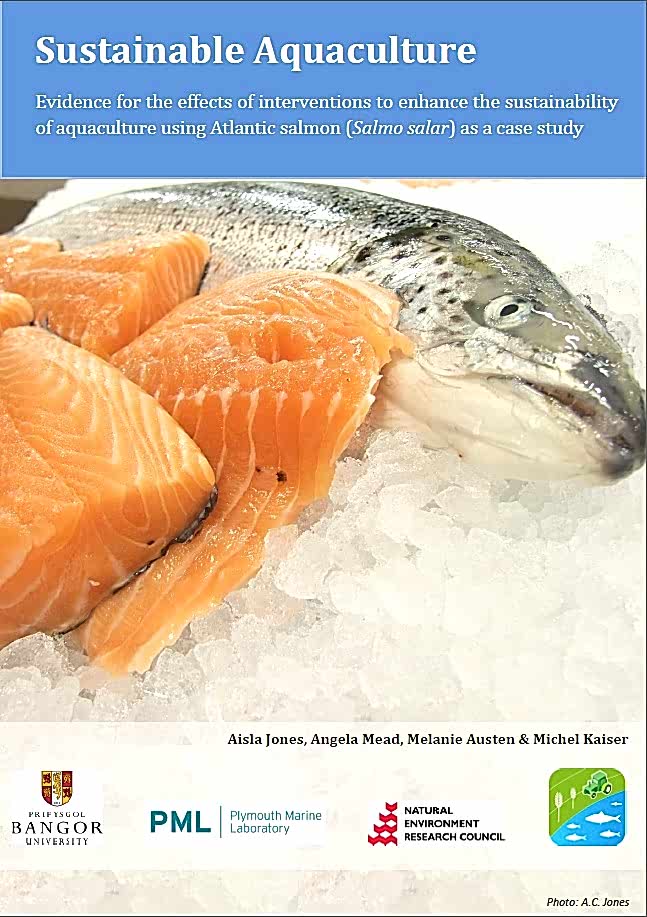Eco friendly biofouling prevention
Overall effectiveness category Awaiting assessment
Number of studies: 2
View assessment score
Hide assessment score
How is the evidence assessed?
Effectiveness
not assessedCertainty
not assessedHarms
not assessed
Study locations
Supporting evidence from individual studies
A replicated, controlled study in Tasmania, Australia in 1995 (Hodson et al., 2000) found that fouling organisms were less abundant and they could be more easily removed from silicon coated nets compared to untreated nets. After 163 days of immersion, there was less fouling on the white silicon coated nets (1.9 kg/m2) compared to uncoated white (7.8 kg/ m2) and black (8.5 kg/ m2) nets. Fouling organisms were also removed more easily from silicon nets compared to untreated nets; 15.3% of the fouling was removed from the silicone coated nets, but only 3.0% and 3.6% was removed from the white and black nets respectively. Three netting types were immersed adjacent to a cage of a salmon farm; a white silicon coated net (coated with Veridian 2000), uncoated white netting and uncoated black netting. Panels were placed on the nets to allow removal without disturbing the integrity of the net structure. After 140 days of immersion, nine panels (three replicates per net type) were removed to quantify ease of fouling removal and fouling composition. Panels were cleaned with a water jet held 30 cm away for 10 seconds to quantify ease of removal of fouling organisms.
Study and other actions testedTwo replicated, controlled experiments in a laboratory and at a fish farm in Norway in 2010 (Guenther et al., 2011) found that a temperature of at least 50oC was effective in preventing the settlement and survival of juvenile hydroids under laboratory conditions. Lab experiments resulted in 100% mortality of juveniles when exposed to 50oC or 60oC. When exposed to 50oC for one or three seconds, low survival rates of adults were observed (12% and 4% respectively) and at 60oC, 100% mortality was observed. Laboratory experiments with 0.2% acetic acid and an immersion time of one minute reduced the survival of juvenile and adult hydroids to between 0 and 35%. There was 100% mortality for juveniles and adults for the five minute immersion. All short term immersion in the 2.0% concentration acetic acid reduced the average settlement of actinulae, and survival of juvenile and adult hydroids to less than 10%. In the field experiments, mean wet weights of biofouling organisms of the heat treatments were significantly lower than the control group. The wet weights of biofouling organisms between the acetic acid treatments were similar. In the laboratory heat experiments, treatment groups were immersed in sand filtered seawater at temperatures of 12 (control), 30, 40, 50 and 60oC for immersion times of 1 and 3 s. In the acetic acid experiments, treatment groups were immersed in acetic acid solutions at concentrations of 0% (control), 0.2% and 2.0% for 1, 3 and 10 seconds, 1 and 5 min. For the fieldwork experiments, net panels were attached to two PVC frames (565 net panels each) and deployed at 2 m depth on the outside of a cage in a fish farm. The net panels were treated with water temperatures of 50 and 60oC and immersion times of 1 and 3 seconds; and an acetic acid concentration of 0.2% with immersion times of 1 and 5 min and a concentration of 2.0% and immersion times of 1 and 3 s. The wet weights (g) and photographs of the net panels with biofouling were taken just before treatment, and two and five days after treatment.
Study and other actions tested
Where has this evidence come from?
List of journals searched by synopsis
All the journals searched for all synopses
This Action forms part of the Action Synopsis:
Sustainable Aquaculture
Sustainable Aquaculture - Published 2013
Atlantic salmon Aquaculture Synopsis




















